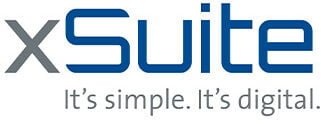Fit for e-invoicing in B2B in six stages


Consequently, this also applies to the sending of electronic invoices; the obligation to do so will follow at a later date in three stages. With the upcoming law on mandatory e-invoicing, special e-invoicing service providers will be required to handle the transmission and ensure that invoice recipients always receive their documents in the desired format. Companies should therefore prepare the selection of suitable technologies and partners thoroughly, ideally by forming a cross-departmental "e-invoicing" project team.
Solutions for the automated processing of incoming invoices are already in use in many companies. However, whether these are able to cover the new requirements arising from the upcoming e-invoicing obligation in B2B is a completely different matter. The software solution must be able to accept invoices in the prescribed digital, structured invoice formats; as there will also be an obligation to send B2B invoices in these formats in the future, a solution that can serve both directions is ideally sought.
Many companies are still lagging behind technologically in this area. And because there will be a strong run on specialized service providers in the coming years, the companies concerned should prepare well for the upcoming e-invoicing project. A 6-step plan will help them do this.
1. Analysis and planning
The first step is to form a project team made up of all relevant departments, the IT department and, ideally, (tax) law specialists. In this phase, you should take a look at how the incoming and outgoing invoice process is currently structured. Are the current systems still state-of-the-art and is it possible to use third-party software? Also important: What is the situation with your own suppliers and customers? Can they already send or receive e-invoices (accounts payable/receivable analysis)?
2. Evaluation
The recorded actual state must then be evaluated. Can the input and output process still be optimized? Where can further costs be saved by introducing e-billing, for example by moving input/output management applications to the cloud? A debtor/creditor strategy is also required. The former must be convinced to receive e-invoices, the latter to send them.
3. Selection of the software provider
In order to find the right e-invoicing provider to cover invoice dispatch, acceptance and processing, the right questions need to be asked, ideally compiled in a requirements catalog. Among other things, this lists which countries, portals and formats are required, which (ERP) systems are to be used, what the system architecture should look like and which business features are needed.
The provider's country, format and network portfolio and how it connects to systems is also important. Its size should also match the size of the commissioning company and the service provider must also have the time available for such a project.
4. Planning of the project
Internal project marketing is required for an e-invoicing implementation project, which involves change management that should not be underestimated. The project team that has already been formed is expanded cross-functionally in this phase, as the project must be communicated internally and further individual requirements must be obtained.
5. Implementation of the project
In close coordination with the internal stakeholders, the new system for inbound and outbound processes finally goes live. At xSuite, it is called "xSuite electronic Document Network Adapter", or xSuite eDNA for short, and runs entirely in the cloud. Long implementation times, as in the past, where a capture process first had to be set up and trained for reading, are a thing of the past. In principle, it is now just a matter of plugging the cloud solution into the ERP (SAP) system used in the company.
In future, the invoices will be sent via a network, currently mainly Peppol (in Europe), and end up in xSuite eDNA. This creates a standardized format from the heterogeneous incoming documents, which can be seamlessly adopted by the subsequent invoice receipt workflow. From a technical point of view, validation is not required; this is also handled by the adapter. For debit-side processes, this solution will also take over the "printing" of outgoing invoices by creating a legally valid invoice from the invoice data supplied, sending it via the network of choice (portals, tax authorities, in future also by email) and at the same time returning it to the finance department for archiving.
6. Productive phase
In actual operation, it is then a matter of checking whether further software functions are required, for example for processing new formats, or whether product innovations are available.
Conclusion:
E-invoicing will play a much more important role in Germany than in the past, because with the e-invoicing obligation in B2B, companies will have to change - in a planned manner and with a view to the opportunities of e-invoicing in particular.
» xSuite: Send and accept e-invoices.
To the partner entry:






